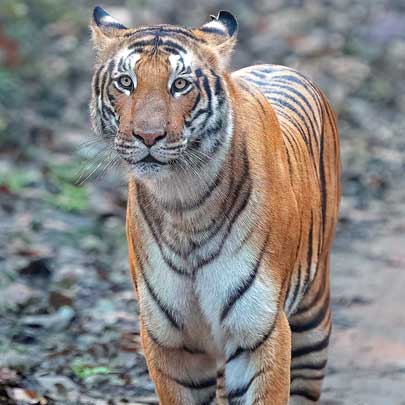Wild Heritage: Pilibhit Tiger Reserve's Contribution To India's Natural Legacy
Pilibhit Tiger Reserve, nestled in the northern part of India, stands as a testament to the nation's rich natural heritage. This reserve, with its diverse ecosystems and vibrant wildlife, plays a crucial role in preserving India's biological diversity. Here's an exploration of how Pilibhit contributes to India's wild legacy:
1. Biodiversity Hotspot:
Pilibhit is recognized as a biodiversity hotspot, housing a remarkable variety of flora and fauna. From majestic tigers to elusive leopards, the reserve is a microcosm of India's wildlife.
2. Endangered Species Conservation:
The reserve is home to several endangered species like the swamp deer, Bengal florican and the hispid hare. Conservation efforts in Pilibhit extend beyond tigers, focusing on safeguarding these rare and endangered species.

3. Rich Flora:
Explore the lush forests and varied vegetation that contribute to the biodiversity of Pilibhit. From dense deciduous forests to open grasslands, the flora forms the foundation of a thriving ecosystem.
4. Role in Tiger Conservation:
Pilibhit plays a vital role in India's tiger conservation efforts. By providing a secure habitat and implementing conservation initiatives, the reserve contributes significantly to the nation's goal of maintaining a healthy tiger population.

5. The Terai Ecosystem:
The unique Terai ecosystem of Pilibhit, characterized by its marshy grasslands and riverine habitats, adds a distinct flavor to India's ecological tapestry. 
6. Cultural and Historical Significance:
Beyond its ecological importance, Pilibhit holds cultural and historical significance. Dive into the stories and folklore associated with the reserve, reflecting the deep connection between people and nature.
7. Conservation Challenges and Triumphs:
The challenges faced by Pilibhit in terms of habitat loss, human-wildlife conflict, and poaching. As human settlements expand, conflicts between wildlife, particularly elephants, and local communities have escalated. Despite conservation efforts, the reserve faces persistent threats from poaching, driven by demand for wildlife products.
Triumphs:
1. Implementing robust anti-poaching strategies, including increased surveillance and better-equipped patrols.
2. Integrating technology, such as camera traps and satellite tracking, for better monitoring and research.
8. Community Involvement in Conservation:
Local communities are actively involved in the conservation initiatives of Pilibhit. Their role in preserving the natural heritage and living harmoniously with wildlife is a crucial aspect of the reserve's success.
9. Educational and Research Initiatives:
Pilibhit serves as an outdoor classroom for researchers and educators. Conducting educational programs to raise awareness about the importance of wildlife conservation is a part of educational and research initiatives that contribute to a better understanding of the region's ecology.
10. Tourism with Responsibility:
Tourism in Pilibhit is managed responsibly, offering visitors a chance to experience the wild while ensuring minimal impact on the ecosystem. Responsible tourism practices contribute to the sustainable future of the reserve.
In essence, Pilibhit Tiger Reserve stands not just as a protected area for wildlife but as a symbol of India's commitment to conserving its natural legacy. Through careful management, conservation efforts and community engagement, Pilibhit continues to contribute to the rich tapestry of India's wild heritage.












































































